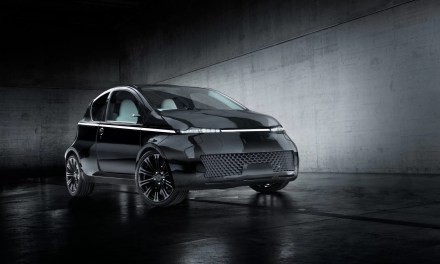XCharge North America is partnering with the Orlando Utilities Commission (OUC) at its Gardenia Innovation & Operations Center’s Grid Integration Laboratory to install XCharge NA’s Net Zero Series (NZS) charger and explore how resilient charging solutions can enhance the electrical grid’s stability while reducing costs. Under a one-year research agreement with the option for extension, OUC will leverage the NZS unit to assess its battery-integrated system and charging capabilities while effectively navigating the rigors of a demanding operational environment.
With energy demands in the state surging alongside a rapidly increasing number of registered EVs (electric vehicles) and EV travelers, OUC recognizes the need for reliable EV charging solutions to support customers while minimizing the operational challenges for utilities. The technology and associated study are aimed at putting OUC at the forefront of solving challenges associated with EV charging that affect utility operations.
“We’re encouraged by XCharge North America’s commitment and the charger’s innovative demand response features, which could better enable us to efficiently manage electricity during peak periods to alleviate stress on the grid,” said Paul Brooker, OUC Manager of Emerging Technologies. “NZS also opens doors for applications like microgrids, which can provide critical backup power to essential services such as hospitals or college campuses during emergencies like hurricanes.”
Traditional behind-the-meter DCFC (DC fast charger) setups frequently require infrastructure upgrades such as new wires and transformers to support the growing demand for EV charging. OUC seeks to explore how these expenses can be minimized.
“We are excited to see how OUC utilizes the NZS’s bidirectional functionality to enhance the grid’s performance, particularly in addressing mobility demand and extreme weather conditions,” said Alex Urist, XCharge NA’s Vice President. “The NZS is poised to deliver significant value, serving as both backup energy storage and a charging station to streamline the expansion of microgrids in the Orlando area. These microgrids can actively manage grid stress and support long-term stability goals, demonstrating the potential impact of our partnership on the energy industry.”
With its battery-integrated design, NZS is engineered to limit the power drawn from the grid with a max output of 194 kW. The unit installed at GIL operates on an existing 60-A breaker and up to 189 kW maximum power. This allows OUC to recharge a Ford F-150 Lightning from 20% to 80% in about 20 min while reducing demand impact on the grid to a quarter of what it would have been.
NZS is designed to accommodate various configurations. It allows for higher output with limited grid input, ensuring its adaptability to future grid requirements.
The charging unit’s dual capability not only accelerates EV charging but also enhances grid stability by allowing operators to dispatch surplus energy back to the grid when not in operation during peak demand. This makes it an asset in electrifying America’s transportation sector and supporting the transition to a cleaner, more resilient energy infrastructure.
The same can be said for GridLink, a charging station that XCharge NA launched in October designed to address the needs of the North American grid. That development represents a significant progression in EV infrastructure, combining rapid charging capabilities with grid support functions.
The new charging station can deliver power of up to 300 kW, allowing EVs to charge in about 15 min. It features an in-house-developed energy storage system that uses lithium iron phosphate (LFP) batteries to prioritize safety, reliability, and longevity. The system offers a base capacity of 215 kW·h, which can be expanded to 430 kW·h.
“GridLink marks a significant step forward for EV charging in North America,” said Aatish Patel, Co-founder and President of XCharge North America. “By delivering 300 kW of power and introducing grid-forming capabilities from the battery discharge, we’re not just improving charging speeds—we’re transforming how EV service equipment interacts with the grid.”
Like the company’s other offerings, the new charging station is designed to be installed with minimal electrical upgrades. It is compatible with both 208- and 480-V electrical systems, providing flexibility for a variety of installation scenarios and adaptability to help reduce costs and simplify the deployment process for operators.
The solution contributes to grid stability by offering bidirectional energy flow, which allows it to send energy back to the grid during peak demand. This feature also facilitates the integration of renewable energy sources, supporting the development of a more resilient and sustainable energy infrastructure as EV adoption increases.
- XCharge NA’s NZS charging station at OUC.
- XCharge NA’s faster GridLink charger.


























































































